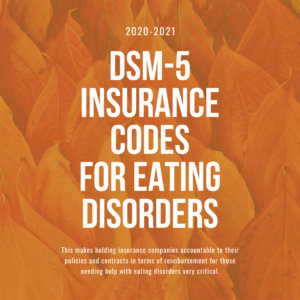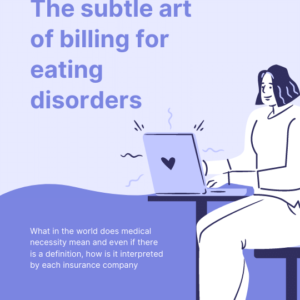What are the Alcohol and Drug Abuse Treatment HCPCS Code range H0001-H0043
The HCPCS (Healthcare Common Procedure Coding System) code range for Alcohol and Drug Abuse Treatment is as follows:
H0001 – Alcohol and/or drug assessment
H0002 – Behavioral health counseling and therapy, per 15 minutes
H0003 – Alcohol and/or drug screening
H0004 – Behavioral health counseling and therapy, per hour
H0005 – Alcohol and/or drug education
H0006 – Alcohol and/or drug prevention, per 15 minutes
H0007 – Individual counseling and therapy, per 15 minutes
H0008 – Group counseling and therapy, per 15 minutes
H0009 – Alcohol and/or drug services; not otherwise specified
H0010 – Alcohol and/or drug screening, brief intervention, and referral to treatment (SBIRT)
H0011 – Alcohol and/or drug program administration and coordination
H0012 – Alcohol and/or drug prevention, per hour
H0013 – Alcohol and/or drug services; group counseling by a clinician
H0014 – Alcohol and/or drug services; group counseling by a peer
H0015 – Alcohol and/or drug services; group counseling by a non-physician
H0016 – Alcohol and/or drug services; group counseling by a physician
H0017 – Alcohol and/or drug services; individual counseling by a clinician
H0018 – Alcohol and/or drug services; individual counseling by a peer
H0019 – Alcohol and/or drug services; individual counseling by a non-physician
H0020 – Alcohol and/or drug services; individual counseling by a physician
H0021 – Alcohol and/or drug services; ambulatory detoxification
H0022 – Alcohol and/or drug services; partial hospitalization (6 or more hours)
H0023 – Alcohol and/or drug services; partial hospitalization (less than 6 hours)
H0024 – Alcohol and/or drug services; detoxification
H0025 – Alcohol and/or drug services; day treatment/partial hospitalization
H0026 – Alcohol and/or drug services; short-term residential
H0027 – Alcohol and/or drug services; intermediate residential
H0028 – Alcohol and/or drug services; long-term residential
H0029 – Alcohol and/or drug services; crisis intervention
H0030 – Alcohol and/or drug services; environmental intervention
H0031 – Alcohol and/or drug services; peer support services
H0032 – Alcohol and/or drug services; acupuncture
H0033 – Alcohol and/or drug services; residential (non-hospital)
H0034 – Alcohol and/or drug services; day treatment
H0035 – Alcohol and/or drug services; partial hospitalization (treatment program of at least 20 hours per week)
H0036 – Alcohol and/or drug services; halfway house
H0037 – Alcohol and/or drug services; family/couples counseling
H0038 – Alcohol and/or drug services; intensive outpatient (treatment program of at least 9 hours per week)
H0039 – Alcohol and/or drug services; medicated assisted treatment (MAT) with extended-release injectable naltrexone (XR-NTX)
H0040 – Alcohol and/or drug services; medicated assisted treatment (MAT) with buprenorphine
H0041 – Alcohol and/or drug services; medicated assisted treatment (MAT) with methadone
H0042 – Alcohol and/or drug services; therapeutic leave
H0043 – Alcohol and/or drug services; not otherwise classified
The most recent version of the HCPCS codebook can change and sometimes getting denials and resubmitting claims is the only way to find the right code for each service, or check with your biller for appropriate coding for the most accurate and up to date information.
So, what else is needed besides the right codes to bill insurance for Alcohol and Drug Abuse Treatment HCPCS Code range H0001-H2043?
Billing insurance requires more than just the correct HCPCS codes. Here are some additional elements that may be needed:
- Accurate and complete documentation: Proper documentation is essential for billing insurance. It should include relevant patient information, assessment results, treatment plans, progress notes, and any other supporting documentation required by the insurance company.
- Verification of insurance coverage: Before providing services, it’s important to verify the patient’s insurance coverage and benefits. This helps determine if the services are covered, any limitations or pre-authorization requirements, and the patient’s financial responsibility.
- Prior authorization: Some insurance plans may require prior authorization for certain services. The provider must submit a request to the insurance company, providing clinical documentation to support the need for treatment. The insurance company will review the request and either approve or deny the authorization.
- Credentialing: Providers must be properly credentialed and contracted with the insurance company to bill for services. This involves submitting necessary paperwork and meeting the insurance company’s requirements for network participation.
- Correct coding and modifiers: Ensure that the appropriate HCPCS codes from the designated range (H0001-H2043) are used for the specific services provided. Additionally, if any specific modifiers are required by the insurance company, they should be applied correctly to indicate additional information about the services rendered.
- Timely submission of claims: Claims should be submitted to the insurance company in a timely manner, following their specific guidelines and deadlines. Late submission may result in claim denials or delays in reimbursement.
- Compliance with insurance policies and guidelines: Familiarize yourself with the insurance company’s policies, guidelines, and reimbursement rules for Alcohol and Drug Abuse Treatment services. This helps ensure that services are provided in accordance with their requirements and that claims are submitted correctly.
HCPCS codes in the range H0001-H2043, modifier codes may be required in certain situations:
- U1 – Modifier U1 is used to indicate that services are provided by a licensed clinical psychologist.
- U2 – Modifier U2 is used to indicate that services are provided by a licensed master’s level clinician.
- U3 – Modifier U3 is used to indicate that services are provided by a licensed bachelor’s level clinician.
- U4 – Modifier U4 is used to indicate that services are provided by a peer specialist.
- U5 – Modifier U5 is used to indicate that services are provided by a non-physician.
- U6 – Modifier U6 is used to indicate that services are provided by a physician.
- U7 – Modifier U7 is used to indicate that services are provided by a certified physician assistant.
- U8 – Modifier U8 is used to indicate that services are provided by a certified nurse practitioner.
- U9 – Modifier U9 is used to indicate that services are provided by a certified clinical nurse specialist.
- U1U9 – Modifier U1U9 is used to indicate services provided by a licensed clinical social worker or a licensed marriage and family therapist.
Modifiers vary depending on the requirements of each insurance company, if any are necessary, they will be needed for accurate billing.
Tips to get care authorized treatment HCPCS Code range H0001-H2043
What else is needed besides the right codes to bill insurance for Alcohol and Drug Abuse Treatment HCPCS Code range H0001-H0043?
The medical necessity guidelines for Alcohol and Drug Abuse Treatment can vary depending on the insurance company and plan:
- Diagnosis of Substance Use Disorder (SUD): Generally, a patient must have a documented diagnosis of Substance Use Disorder, which may include alcohol or drug dependence or abuse. The diagnosis should be based on established diagnostic criteria such as those outlined in the Diagnostic and Statistical Manual of Mental Disorders (DSM-5).
- Functional Impairment: The patient’s substance abuse or addiction should be causing significant functional impairment in their daily life. This can include impairments in occupational functioning, social relationships, physical health, psychological well-being, or other areas of life functioning.
- Severity of the Condition: The severity of the patient’s Substance Use Disorder is often considered. This may include the frequency and intensity of substance use, presence of withdrawal symptoms, risk of harm to self or others, or the level of impairment caused by the substance use.
- Failed Attempts at Less Intensive Treatment: In some cases, insurance companies may require documentation of failed attempts at less intensive levels of treatment, such as outpatient counseling or support groups, before authorizing more intensive levels of care, such as residential treatment or partial hospitalization.
- Treatment Goals: The requested services should align with specific treatment goals and objectives. The treatment plan should be designed to address the patient’s substance abuse or addiction, promote recovery, and improve overall functioning and well-being.
- Evidence-Based Practices: Insurance companies often look for evidence that the requested services align with established evidence-based practices for Alcohol and Drug Abuse Treatment. These may include recognized treatment modalities, therapies, or approaches that have been shown to be effective in addressing Substance Use Disorders.
Medical necessity for behavioral health insurance authorization refers to the criteria that must be met in order for insurance companies to approve coverage for behavioral health services. It involves demonstrating that the requested treatment is medically necessary and appropriate for the patient’s condition.
To summarize medical necessity for behavioral health as far as most insurance is concerned:
To establish medical necessity, certain factors are typically considered. These include the presence of a diagnosable mental health or substance use disorder, functional impairment caused by the condition, the severity and impact of symptoms on daily life, failed attempts at less intensive treatments, and the alignment of the treatment plan with evidence-based practices. Documentation should clearly articulate the treatment goals, the expected outcomes, and how the proposed services will address the patient’s specific needs. Collaborating with other healthcare professionals and following the insurance company’s guidelines and documentation requirements can improve the chances of obtaining authorization for behavioral health services.



